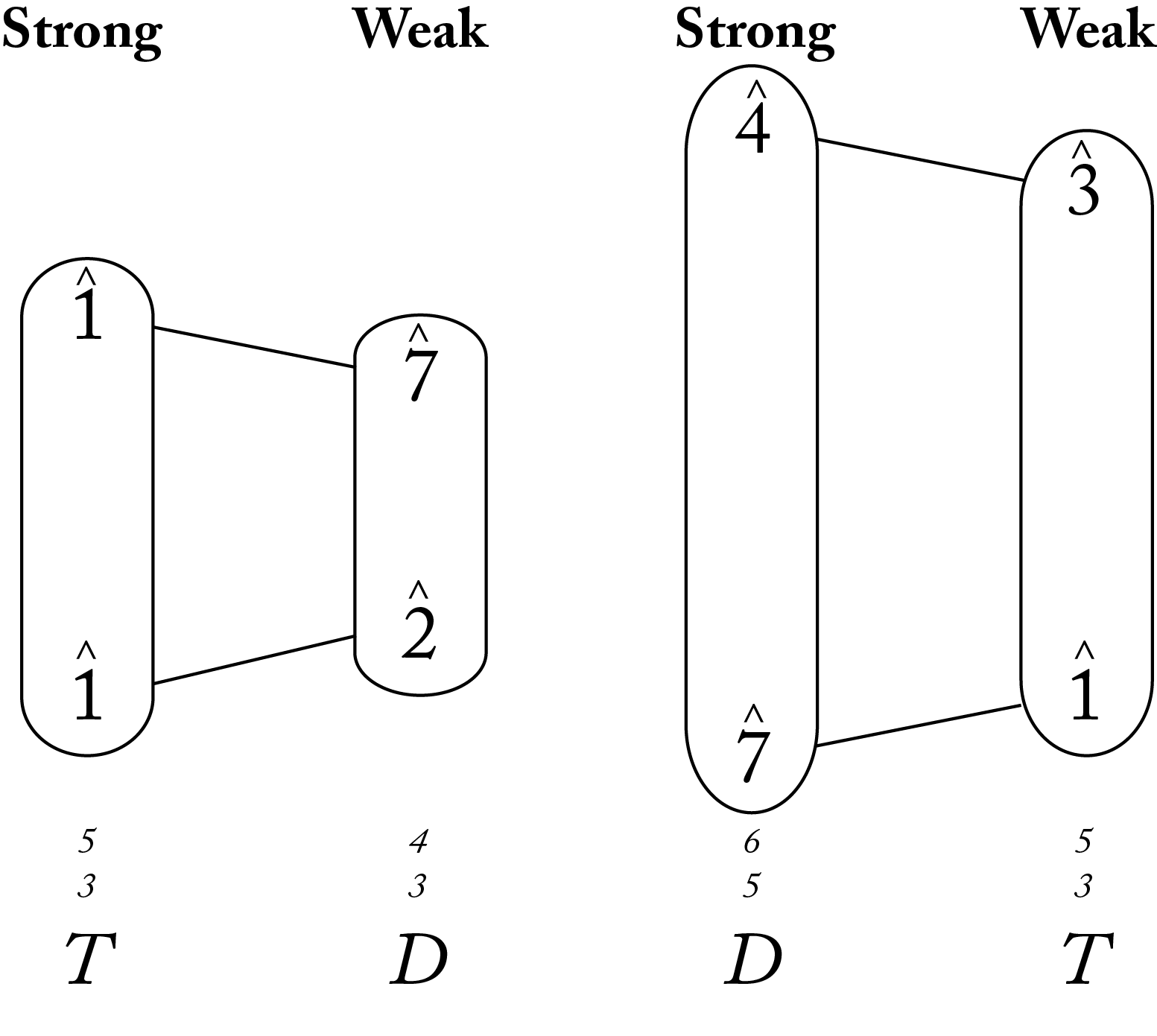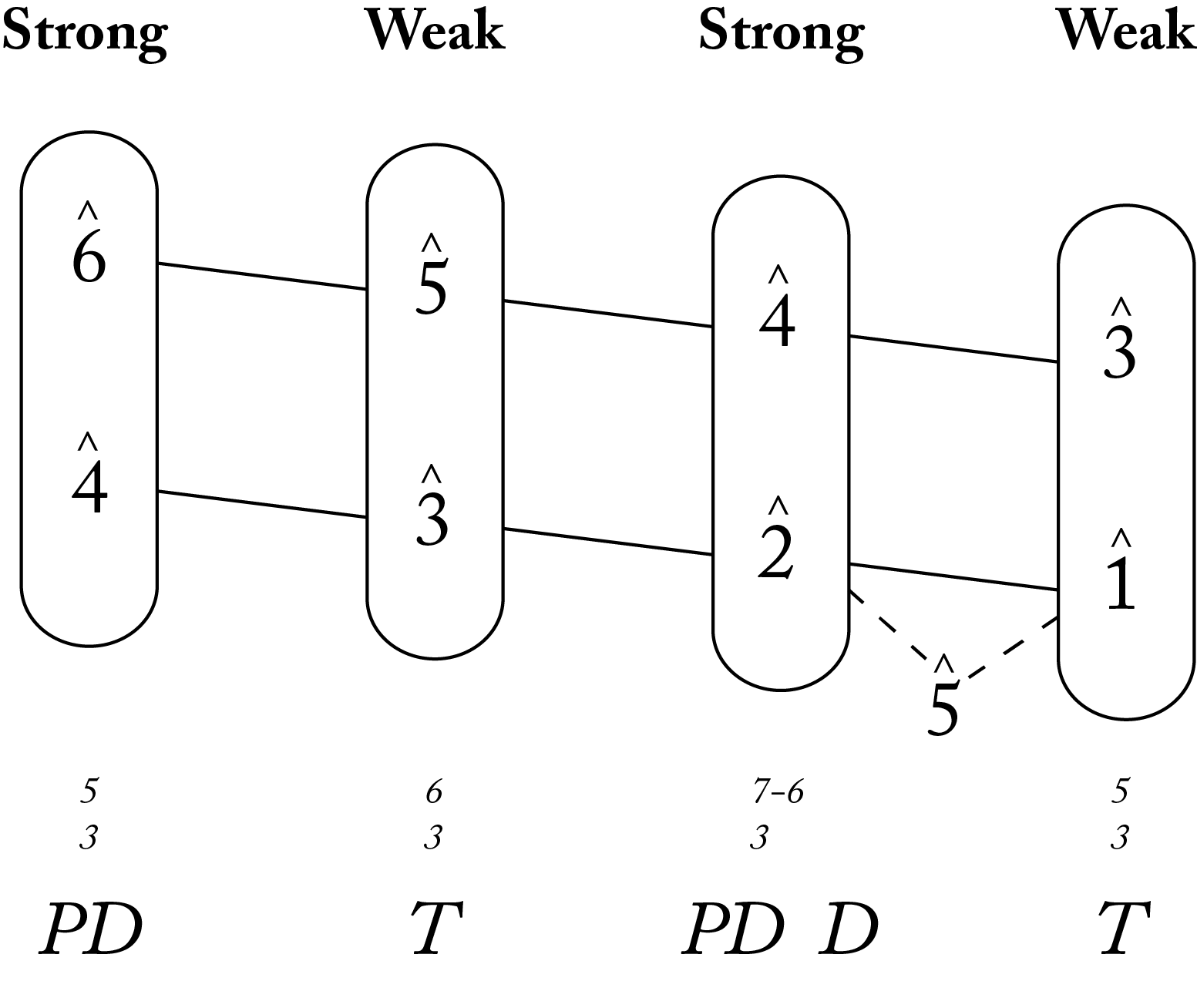Galant Schemata – opens and closes
Schemata (pl. of schema) are “stock musical phrases” (Gjerdingen 2007, p. 6) that act as melodic, harmonic, and rhythmic/metric skeletons for passages of music in the Galant style. We can apply the term schema in three specific ways. First, a schema is a prototype—an idealized version of a common pattern. Second, a schema can be an exemplar—a single pattern that resembles the prototype. Third, a schema can be a theory—an explanation of a commonly occurring musical event. All of these ideas go into how we understand schemata. We understand an individual pattern (exemplar) as a version of an ideal general pattern (prototype), and that relationship helps us understand how that pattern is functioning within a particular passage of music (theory).
Schemata are often give names, sometimes based on descriptions from earlier theorists (“Monte, Fonte, Ponte,” were described by Joseph Riepel) or at other times, named after theorists themselves (“Meyer” is named after Leonard Meyer).
Schemata have both internal defining characteristics and normative placements within a series of musical events. Internal characteristics describe a schema’s (1) melodic features—shown with scale degrees; (2) harmonic features—shown with figured bass, and (3) metric features—indicating whether a “stage” in the schema occurs in a weak or strong metric position. A schema’s normative placement describes it temporal location. For example, an “opening gambit” such as the “Meyer” is associated with the beginning of theme, perhaps constituting the whole of the presentation phrase or of a basic idea. A closing “riposte” like the “Prinner” is used as closing gesture.
##Opening Gambits##
###“The Meyer”###
A Meyer is archetypal”opening” schema in the galant style that prolongs the tonic contrapuntally. It begins and closes on a tonic chord, with non-tonic sonorities occuring in the middle two stages. Because the Meyer closes with mi/me in the top voice, it is not so strong as to imply the finality we associate with a cadence. So it works well at the beginning of a theme. This melodic skeleton is the most important feature of the Meyer, and occurs invariably even when the bass is somewhat altered.
When each sonority receives one “measure” of music, it is commonly found in the presentation or antecedent part of an opening theme. If those stages occur at the rate of two per measure, the Meyer may form a basic idea that would be followed by a closing gesture, such as the “Prinner” described below.
A fairly exhaustive list of opening schemata can be found on the Galant schemata – summary page. Many of them follow the same general pattern as the Meyer. For example, “The Pastorella,” “The Jupiter,” and “The Aprile,” all prolong tonic by moving away for the two middle stages before a tonic return. Like the Meyer, they are ideal prototypes for the first phrase of an opening theme. As with the Meyer, the bass and harmonic structure are less fixed than is the melody. The two central stages may articulate dominant harmony in all three schemas, and the second stage is also commonly accompanied by predominant harmony.
##Closing gestures##
###“The Prinner”###
The Prinner is a typical response to an opening schema. It often occurs in a sentence (or a hybrid theme type) as the continuation phrase. Or if the harmonic rhythm is quicker, it may be used as the basis for a constrasting idea in an antecedent or consequent phrase.
The Prinner has four stages corresponding to four bass notes: fa –mi/me – re – do. The skeleton of the Prinner’s melody typically accompanies the bass in parallel tenths: la/le – sol – fa – mi/me. Harmonically, the fa and do bass notes tend to take 5/3 chords while the two middle bass notes, mi/me and re, take 6/3 chords.
Some Prinner exemplars insert a sol bass note before the last chord, resulting in an authentic cadence. Prinners that operate as continuation phrases often contain this move in order to end the sentence or hybrid theme satisfactorily.
To complete a modulation to the dominant, the Prinner schema can be transposed up a fifth. When this occurs, the first stage of the Prinner (the 5/3 chord on fa) is the tonic of the home key and the subdominant of the dominant key, making a particularly smooth transition. Modulating Prinners are used in sentence or hybrid themes either to modulate to the dominant key or to effect a strong half cadence. They also commonly appear at the beginning of the Transition (TR) zone in a sonata movement, effecting the same move to the dominant.
For more continuation/cadential schemata, see the Galant schemata – summary page.
References
Gjerdingen, Robert O. Music in the Galant Style. Oxford University Press, 2007.
Share
